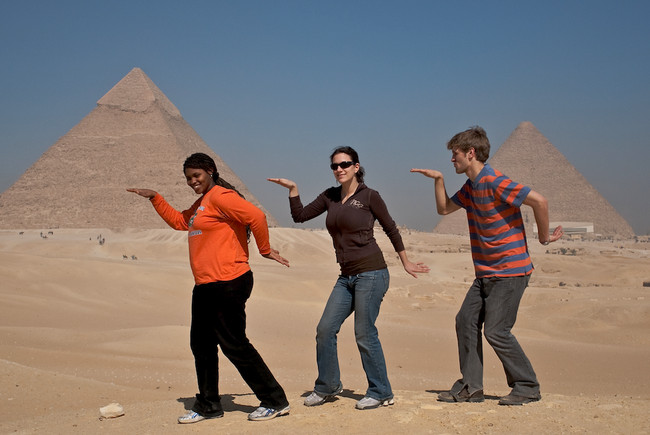The 1980s were a vibrant decade for music, overflowing with iconic tunes that continue to resonate today. Among these classics stands “Walk Like an Egyptian” by The Bangles, a song that not only topped charts worldwide but also sparked a global dance craze. While some critics might have dismissed it as a novelty track, its impact on pop culture and the band’s trajectory is undeniable. Let’s delve into the story behind this catchy tune, exploring its origins, its phenomenal success, and its complex legacy within The Bangles’ discography.
From Obscurity to Global Phenomenon: The Genesis of “Walk Like an Egyptian”
Unlike some of their earlier hits, “Walk Like an Egyptian” wasn’t penned by The Bangles themselves. As the original article points out, by 1986, The Bangles had already achieved significant success with “Manic Monday,” written by Prince (under the pseudonym Christopher), and their cover of Simon & Garfunkel’s “Hazy Shade of Winter.” These hits showcased their musical talent and harmonies, but “Walk Like an Egyptian” took them in a slightly different direction.
The song was written by Liam Sternberg, who initially offered it to Toni Basil and Lene Lovich, both of whom passed on it. Recognizing its potential, Sternberg then presented it to producer David Kahne, who was working with The Bangles on their album Different Light. Despite its seemingly simple and somewhat quirky nature, “Walk Like an Egyptian” possessed an undeniable hook. Released as a single, it quickly ascended the charts, eventually reaching the number one spot in December 1986 and becoming the number one song of 1987 in the United States. This unexpected triumph solidified The Bangles’ place in pop music history, even if it came with its own set of complexities.
The Power of Visuals: Music Video and the “Egyptian” Dance Craze
In the era of MTV, music videos were becoming increasingly crucial to a song’s success. “Walk Like an Egyptian” benefited immensely from its memorable and widely aired video. The video depicted ordinary people in various situations – from construction workers to ferry passengers – spontaneously performing the distinctive “Egyptian” walk. This visual element tapped into the novelty dance trend popularized by songs like Chubby Checker’s “The Twist” and, more contemporarily, The Time’s “The Bird.”
 The Bangles in their "Walk Like an Egyptian" music video, showcasing their signature harmonies and 80s style.
The Bangles in their "Walk Like an Egyptian" music video, showcasing their signature harmonies and 80s style.
The article also highlights the impact of Susanna Hoffs’ close-ups in the video, particularly her eye-rolling gesture, which undeniably contributed to the video’s appeal and captivated a large audience. Coupled with the song’s infectious rhythm and catchy chorus, the video propelled “Walk Like an Egyptian” into a global phenomenon, transcending radio airplay and becoming a cultural moment. The “Egyptian” walk became a popular dance move, imitated everywhere from schoolyards to nightclubs, further cementing the song’s place in popular culture.
Critical Perspectives and Enduring Appeal
While commercially triumphant, “Walk Like an Egyptian” received mixed reviews from critics. Some dismissed it as a novelty song, criticizing its repetitive structure and perceived lyrical simplicity. The original article reflects this sentiment, describing it as “muddy-sounding, prolix to no end, and dumb,” although also acknowledging moments of brilliance like Hoffs’ vocal delivery on specific lines and the harmonies.
However, despite the critical reservations, the song’s enduring appeal is undeniable. Its catchy melody, coupled with the cultural phenomenon of the dance, ensured its longevity. “Walk Like an Egyptian” remains a staple on 80s playlists and continues to be enjoyed by new generations. Its simplicity, often cited as a weakness, is arguably its strength, making it instantly accessible and fun. The song’s lightheartedness and quirky charm have allowed it to transcend generational divides, becoming a go-to track for parties, movies, and nostalgic trips back to the 80s.
Beyond the Novelty: The Bangles’ Artistry and Legacy
The success of “Walk Like an Egyptian” cast a long shadow over The Bangles’ career. While it undoubtedly brought them mainstream fame and financial rewards, it also raised questions about their artistic identity. The original article suggests that the band members themselves were wary of the song’s novelty nature and its potential to define them solely as a pop act, rather than as serious musicians and songwriters.
Indeed, The Bangles were more than just “Walk Like an Egyptian.” Their earlier work, as highlighted in the original article, demonstrated their musical prowess. Songs like “Manic Monday,” “Hazy Shade of Winter,” and even deeper cuts from Different Light, showcased their songwriting abilities, harmonies, and instrumental talents. The album Different Light itself, despite the inclusion of “Egyptian,” is considered a solid record, featuring tracks that demonstrate the band’s “shrewdness and vivacity.”
The band’s internal dynamics were also affected by the song’s success and the production choices surrounding it. The original article mentions tensions arising from producer David Kahne’s decisions, including the exclusion of Debbi Peterson’s vocals from “Egyptian.” These creative differences contributed to the band’s decision to co-write all the songs on their subsequent album Everything, a move that, according to the article, did not necessarily result in a stronger record.
Conclusion: A Complex Legacy of a Pop Culture Icon
“Walk Like an Egyptian” is a song that occupies a unique space in pop music history. It’s a song that is both celebrated and sometimes dismissed, a testament to the often-complex relationship between commercial success and critical acclaim. While it may not be The Bangles’ most artistically profound work, it remains their most recognizable and enduring hit. It propelled them to global stardom, defined a moment in 80s pop culture, and continues to bring joy and nostalgia to listeners worldwide.
Ultimately, “Walk Like an Egyptian” paid the bills, as the original article wryly notes, allowing The Bangles to continue making music, even if it also inadvertently contributed to internal pressures and a shift in their artistic trajectory. The song’s legacy is a reminder that in the world of pop music, even novelty tunes can have a profound and lasting impact, shaping both the careers of artists and the cultural landscape.


